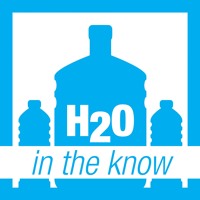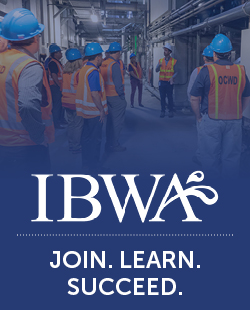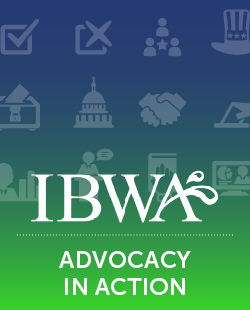OVERALL RESPONSE
-
- Bottled water is safe! It is one the most highly regulated food products under the FDA regulatory authority. The current FDA system works extremely well especially when coupled with the IBWA Model Code and unannounced inspections.
-
- The NRDC reports confirms that our product is SAFE! The NRDC ran 45,000 tests on our products and found two tests that may have exceeded federal standards. And the two positive results could not be verified again during re-testing!
-
- The NRDC report confirms the results of the industry’s own testing program. According to NRDC’s independent testing, “most bottled water tested was of good quality. Most waters contained no detectable bacteria, and the levels of synthetic organic chemicals and inorganic chemicals of concern for which we (NRDC) tested were either below detection limits or well below all applicable standards.”
-
- There have been no confirmed reports of illness or disease linked to U.S. bottled water, whereas, tap water has had significant problems in places like Milwaukee and Las Vegas.
HPC
-
- HPC is a naturally occurring microbe, which is found in a wide array of food products including bottled water. Most bacteria are not harmful and HPC organisms serve to prevent the growth of opportunistic pathogens because they have the strength to help overcome harmful bacteria and pathogens that may pose a health threat. There has never been a documented illness associated with HPC. Neither the EPA nor the FDA believes there is a health risk associated with background flora in drinking water, including bottled water, and neither agency has set a standard for the amount in drinking water.
ARSENIC
-
- Arsenic is a naturally occurring substance, which can be found in both water and human body. There are federal standards promulgated by both the EPA and the FDA. There is also an industry standard listed in the IBWA Model Code, which IBWA members have to meet. If either the Federal Government or we conclude that, based on good science, that the present levels are too high. We’ll be the first to change them.
COLIFORM
-
- In 1994, the FDA, proposed to lower the standard for coliform from two to zero. The industry standard is zero. We strongly support FDA, and continue to encourage the agency to move the standard to zero. Again, 85% of the volume of product distributed in this country is annually tested on a zero coliform standard through the IBWA standard.
FLOURIDE
-
- The NRDC report found that the level of fluoride exceeded FDA’s maximum allowed level in only one test, which could not be reconfirmed in a re-test. Incidentally, some people think there ought to be more fluoride available to people.
RIGHT-TO-KNOW
-
- EPA’s Right-to-Know system sounds good but is actually a weak system! Consumers receive a difficult to decipher report once a year from their municipalities. Whereas, we in the bottled water industry have a great system that protects the consumer. Consumers can find out what’s in their bottled water instantaneously by calling the phone number on the label of their favorite bottled water brand. They can also obtain that information by accessing some bottled water companies’ Web sites.
-
- IBWA disagrees with NRDC on its efforts to move the regulation of bottled water from the FDA to the EPA. The FDA system contains a provision and mechanism to immediately remove any bottled water found to exceed federal safety standards from the market. The EPA lacks a system to remove products from the market and relies on the less effective ” Right-to-Know.” This approach shifts product safety responsibility from the government to the consumer. Under the current EPA system for tap water, systems violating federal standards must only inform consumers of the violation. EPA provides enormous volumes of technical data to consumers, who are then asked to make their own decisions on water quality. EPA does not have a system to recall unsafe water. According to the NRDC study, 10 percent of community tap water systems serving 1 out of 7 Americans violate federal safety standards for contaminants daily!
-
- We, in the bottled water industry, have a great system that protects the consumer. If there is something that is harmful to human health in your tap water, municipalities have to inform you by sending you a letter in the mail. However, if a bottled water product is harmful, there is a system in place to get the product of the shelf. The bottled water recall provision is much more effective and protective of public health compared to the receipt of a report from a municipality via regular mail.
MISLEADING IMAGES ON PRODUCT LABELS
-
- Bottled water manufacturers also must ensure that their products meet the FDA established standard of identity for bottled water products, which was established in 1996. A bottled water product bearing a particular statement of identity, for example “mineral water,” must meet the particular requirements of the standard of identity for mineral water to avoid being misbranded. There are definitions for bottled water, drinking water, artesian water, ground water, distilled water, deionized water, mineral water, reverse osmosis water, purified water, sparkling bottled water, spring water, sterile water and well water. If a bottled water is misbranded, it is subject to recall.
-
- By law, the most important bit of information on a label is the fact that it includes an FDA defined term such as “purified drinking water,” which makes it in compliance with FDA’s standard of identity. With regard to municipal water that’s been further processed, FDA has said if it hasn’t been processed then it indeed has to identify its source as municipal water. But if it has been further processed in several ways, including distillation, then that is a different product and the municipal source doesn’t have to be on the label. Consumers can determine what the product is because of FDA’s standard of identity regulation.


